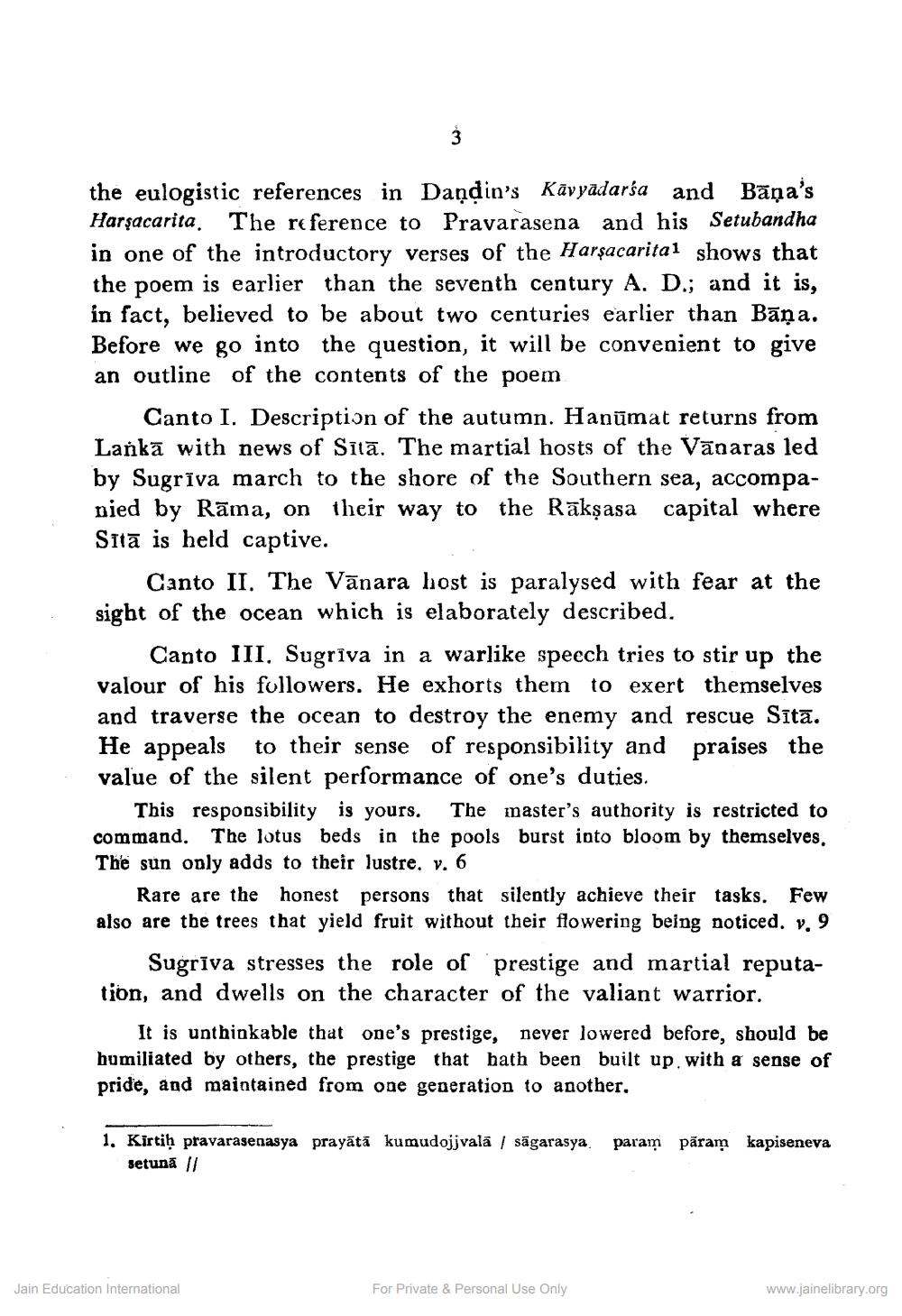________________
the eulogistic references in Daņdin's Kāvyadarśa and Bāņa's Harşacarita. The reference to Pravarasena and his Setubandha in one of the introductory verses of the Harşacarital shows that the poem is earlier than the seventh century A. D.; and it is, in fact, believed to be about two centuries earlier than Bāņa. Before we go into the question, it will be convenient to give an outline of the contents of the poem
Canto I. Description of the autumn. Hanūmat returns from Lankā with news of Sīlā. The martial hosts of the Vānaras led by Sugrīva march to the shore of the Southern sea, accompanied by Rāma, on their way to the Rākşasa capital where Sita is held captive.
Canto II. The Vānara host is paralysed with fear at the sight of the ocean which is elaborately described.
Canto III, Sugrīva in a warlike speech tries to stir up the valour of his followers. He exhorts them to exert themselves and traverse the ocean to destroy the enemy and rescue Sītā. He appeals to their sense of responsibility and praises the value of the silent performance of one's duties.
This responsibility is yours. The master's authority is restricted to command. The lotus beds in the pools burst into bloom by themselves. The sun only adds to their lustre, v. 6
Rare are the honest persons that silently achieve their tasks. Few also are tbe trees that yield fruit without their flowering being noticed. v. 9
Sugrīva stresses the role of prestige and martial reputation, and dwells on the character of the valiant warrior.
It is unthinkable that one's prestige, never lowered before, should be humiliated by others, the prestige that hath been built up with a sense of pride, and maintained from one generation to another.
param
pāram
kapiseneva
1. Kirtih pravarasenasya prayātā kumudojjvala / sāgarasya
setunā //
Jain Education international
For Private & Personal Use Only
www.jainelibrary.org
www.jainelibrary.org




